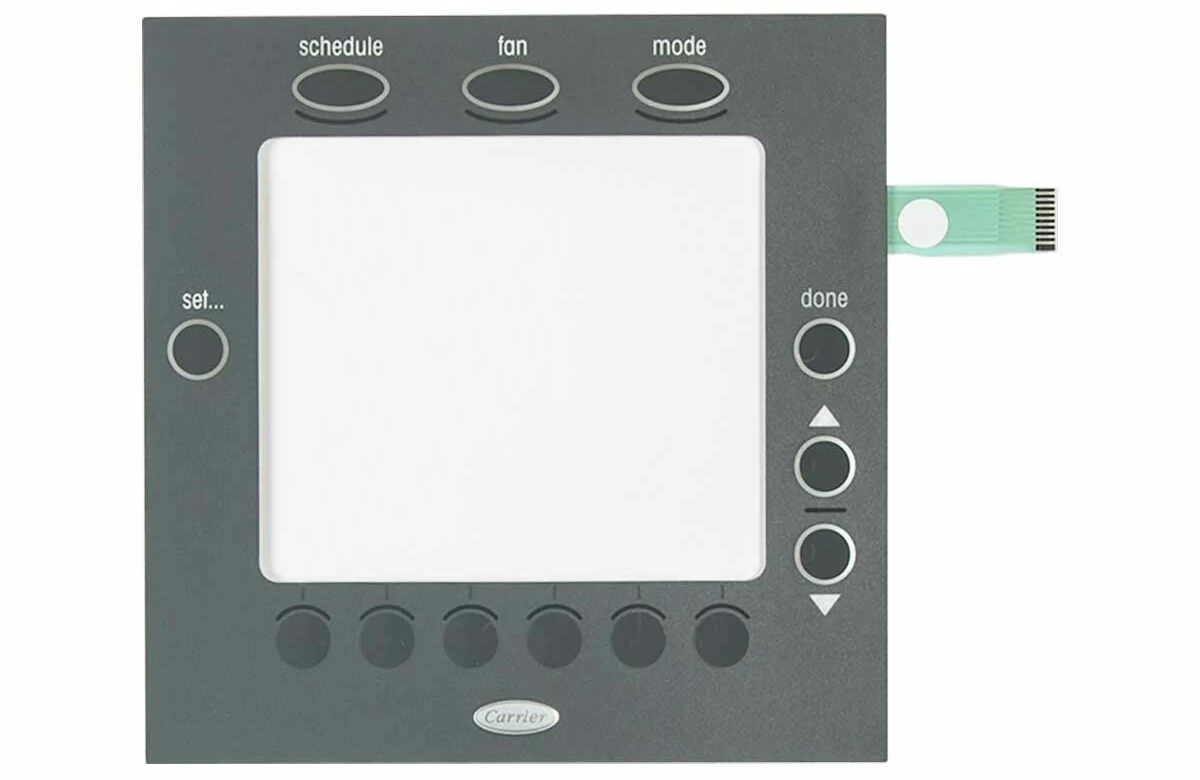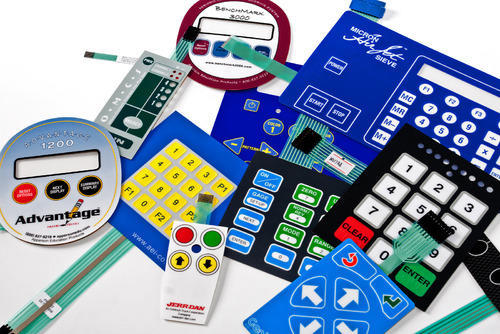Find out about the Environmental Advantages of Using Membrane Switches in Electronic Devices
Find out about the Environmental Advantages of Using Membrane Switches in Electronic Devices
Blog Article
The Ultimate Source on Membrane Layer Changes: Layout, Performance, and Applications
Membrane layer switches over offer as an intriguing crossway of design and functionality, playing a crucial role in modern user interfaces across numerous markets. As we explore the diverse applications of membrane switches, it becomes apparent that their adaptability and longevity are critical in environments ranging from medical care to customer electronic devices.

Recognizing Membrane Buttons
Membrane layer switches are a sort of individual interface innovation extensively used in different digital gadgets, characterized by their thin, flexible style and performance. These switches consist of several layers that consist of graphic overlays, glue layers, and wiring, allowing a effective and compact user interface for users. They can be discovered in appliances, clinical gadgets, and commercial control board, offering a reputable technique for user communication.
Among the main advantages of membrane buttons is their capability to stand up to contaminants such as dirt and wetness, making them suitable for atmospheres where durability is vital. Their low-profile style permits for smooth integration right into various applications, while the personalized graphic overlays improve customer experience by supplying clear aesthetic feedback. Additionally, membrane buttons can suit a variety of modern technologies, such as responsive responses and backlighting, additional boosting their use.
The manufacturing process for membrane layer changes normally involves display die-cutting, lamination, and printing strategies, ensuring precision and uniformity in production. Generally, membrane changes represent a reliable and versatile remedy for modern electronic devices, combining performance with visual appeal in individual interface design.
Secret Components and Design Aspects
A variety of crucial components and style components come with each other to produce a reliable membrane layer button. At the core, the visuals overlay serves both functional and aesthetic functions, offering an easy to use user interface while securing inner parts from environmental variables. The choice of products, normally polyester or polycarbonate, affects toughness and responsive responses.
Under the overlay, the sticky layer makes sure the button sticks firmly to the substratum, which can be glass, metal, or plastic. The spacer layer is crucial, as it preserves the needed void in between the circuit and the overlay layers, permitting for efficient actuation. Membrane Switches. Circuit traces, typically made from conductive ink or adhesive, are printed on a flexible substratum, making it possible for electric signals to be sent when stress is used
Layout factors to consider additionally consist of the setup of responsive domes or embossing that offer physical comments to the customer, boosting the general experience. Furthermore, the layout and spacing of the buttons have to be maximized for convenience of usage, making sure that customers can navigate the interface intuitively. Generally, these components and layout components work synergistically to produce a trustworthy, functional membrane button customized to details applications.
Capability and Operation Device
At the heart of efficient performance for membrane changes exists their operational mechanism, which helps with user interaction via a basic yet effective style. These buttons operate the concept of stress activation, where an individual uses force to a marked area of the switch (Membrane Switches). This activity presses the layers of the switch, completing an electrical circuit that sends a signal to the linked device
The building and construction usually includes a leading graphic layer, a sticky spacer layer, and a bottom circuit layer, which jointly create a robust user interface. When stress is used, the leading layer breaks down against the lower circuit layer, enabling conductive traces to link. This layout not only makes it possible for clear responsive responses but likewise makes certain longevity and reliability, as the buttons are typically immune to dust and dampness.
Furthermore, the flexibility of membrane changes enables combination with various modern technologies, including LED indications and microcontrollers, boosting their capability. By providing a structured user interface that minimizes mechanical wear, membrane layer switches over remain a popular choice in applications ranging from customer electronics to industrial equipment, making important site certain optimal efficiency and individual satisfaction throughout varied atmospheres.
Sorts Of Membrane Layer Switches

One more substantial classification is brightened membrane layer switches, which incorporate backlighting to enhance presence in low-light conditions. These buttons are commonly used in control panels and control panels where clear presence is necessary.
In addition, there are personalized membrane switches over made to fulfill specific dimensional, graphical, and more practical demands. These modifications can consist of unique shapes, shades, and formats, enabling seamless integration right into different devices.

Applications Throughout Numerous Industries
Just how do membrane buttons enhance performance throughout varied markets? These flexible components are important to many applications, providing streamlined interface and robust performance. In the clinical industry, membrane buttons play an important role in devices such as diagnostic devices and individual tracking systems, where reliability and simplicity of cleaning are paramount. Their ability to withstand severe settings makes them perfect for research laboratory instruments and surgical gadgets.
In the vehicle sector, membrane layer switches are commonly utilized in dashboards and control board, supplying instinctive controls that improve driver safety and benefit. The customer electronic devices field additionally gains from their lightweight and adjustable features, making it possible for sleek layouts for smartphones and home devices.
Additionally, membrane switches locate applications in commercial automation, where they contribute to effective machinery procedure and tracking systems. Their resistance to dust and wetness makes sure performance in requiring conditions (Membrane Switches). Furthermore, the food and beverage market uses membrane layer buttons for equipment control, where hygiene and resilience are critical
Conclusion
To conclude, membrane switches over represent a critical innovation in user interface modern technology, defined by their distinct design and capability. Their essential parts, consisting of visuals overlays and circuit traces, add to their operational performance via stress activation. The adaptability of membrane switches promotes their application across diverse markets, from clinical gadgets to consumer electronics. This thorough understanding enhances the significance of membrane switches in enhancing product usability and toughness in modern technical atmospheres.
Membrane layer switches serve as an interesting crossway of design and performance, playing a critical function in contemporary customer interfaces across numerous industries.Membrane switches check here are a kind of user interface technology commonly utilized in various electronic devices, defined by their slim, versatile style and functionality.At the heart of reliable functionality for membrane layer switches exists their operational mechanism, which facilitates user communication through a straightforward yet reliable design. These switches run on the concept of stress activation, where a customer uses force to a marked area of the switch.In conclusion, membrane switches stand for a vital advancement in user interface innovation, identified by their distinct design and functionality.
Report this page